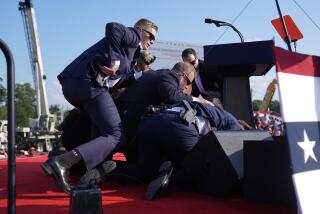SAFETY : Lessons of N.Y. Bombing Inspire Changes in Security
- Share via
Leaders of the crews working to restore New York’s World Trade Center after the Feb. 26 bombing say they are making some important changes in safety and security systems, joining other industries that have learned costly lessons from such disasters as a high-rise fire and a mass murder at a fast food restaurant.
“Everything’s on the table right now,” says Mark Marchese, spokesman for the Port Authority of New York and New Jersey, which runs the building complex. While the rubble was being combed for clues, the agency was reviewing emergency power systems and parking policy. It is making changes while tenants move back in.
MAKING CHANGES: One of the debates is an old one--whether to allow public parking. Restricted parking is clearly more secure and might well have kept out the yellow van that bore the explosives to the B2 parking level.
But “the rationale for not going with (closed) parking was that this is a democracy, and there are certain amenities you’re used to in a democracy,” said Marchese.
The lack of emergency power after the blast is more easily solved. The primary and backup systems for the 110-story towers were some distance apart. “But given the magnitude of the blast, both went,” he said.
So along with some improvements in its communications and smoke-purge systems, the Trade Center will be getting a third layer of “redundant” power. For now, it will be a series of portable generators outside the complex. Ultimately, there will be a new system of battery-run lights on elevators and stair landings.
Other buildings in the area will almost surely follow suit. Indeed, the 1988 fire in the 62-story First Interstate Bank building in Los Angeles led to safety alterations in Southern California and beyond.
Los Angeles changed its municipal code so that all commercial buildings over 75 feet tall have to have sprinklers, fire sensors every few floors and air pressurization systems to fan smoke out of stairwells. The fire even led to some changes in firefighting techniques, from the establishment of a high-rise unit to oversee and inspect such buildings to the upgrading of the fire department’s radio system so firefighters could talk between floors.
First Interstate went beyond code in its rebuilding, adding extra air pressurization fans for stairwells and a 100,000-gallon water tank on the roof.
Restaurants and convenience stores also have learned from their own experiences. After averaging one robbery per store per year at its 7-Eleven stores, Southland Corp. made a number of changes that are now standard in the industry.
The look was changed, aiming for a “fishbowl” effect that put any robbery on full display: windows were cleared of signs and displays, lighting was beefed up, cash registers were set in full view. Signs announced that only $30 (now $50) was kept in the registers. Most important, employees were trained not to be confrontational, to give the robber what he wanted.
It worked: The robbery rate at 7-Elevens and at other convenience stores was halved.
Restaurants adopted some of the same techniques, and added some others: keep the kitchen doors locked, avoid night trips to back yard dumpsters, be especially careful when closing up.
THE UNPREDICTABLE: In recent years, restaurants have experienced a special horror--attack by gunmen seeking not money but people to kill. The killing of 21 people at a McDonald’s in San Ysidro, Calif., in 1984, or of 22 at Luby’s Cafeteria in Killeen, Tex., in 1991, are the small-business equivalent of a terrorist attack.
Violence is the primary goal. The restaurant, like the office tower, is attractive because of the people gathered there and the public access.
Such terrorism is both unpredictable and unpreventable. With mass murderers, there’s “not much you can do to stop them, whether you’re a restaurant, a shoe store or a bank,” says Chris Guarrero, chairman of the National Foodservice Security Council.
More to Read
Sign up for Essential California
The most important California stories and recommendations in your inbox every morning.
You may occasionally receive promotional content from the Los Angeles Times.













